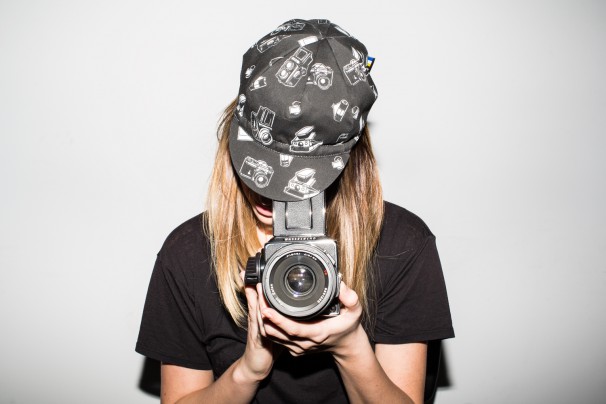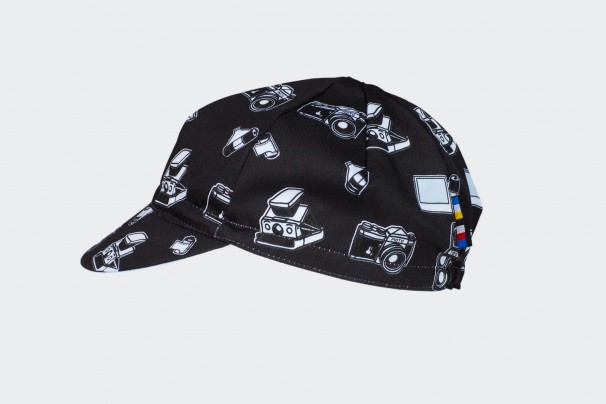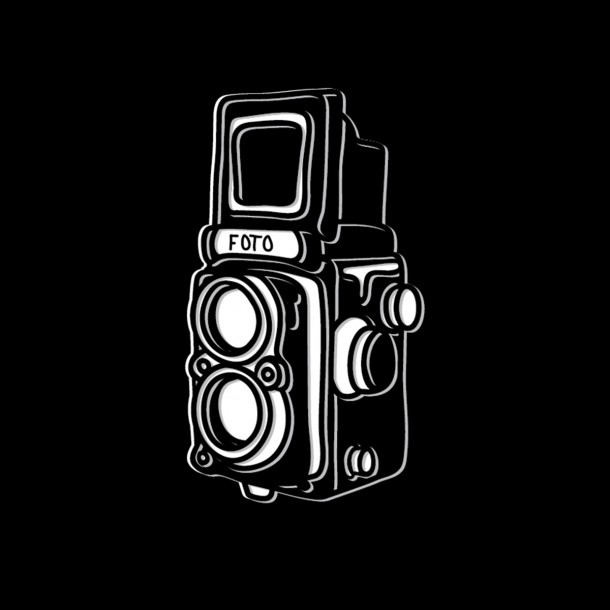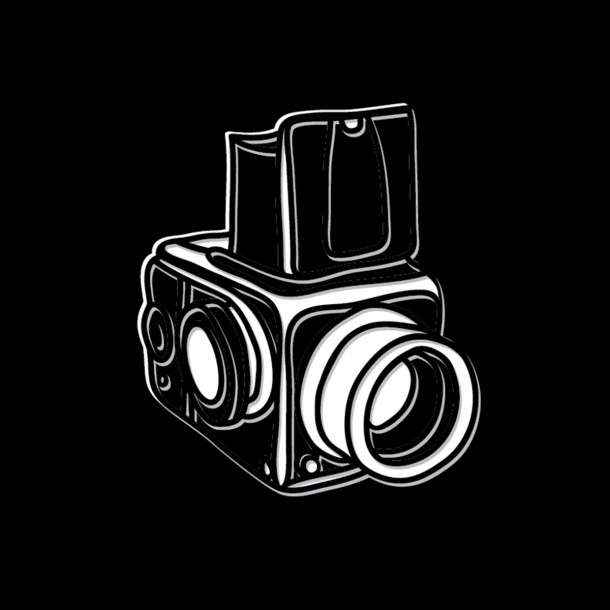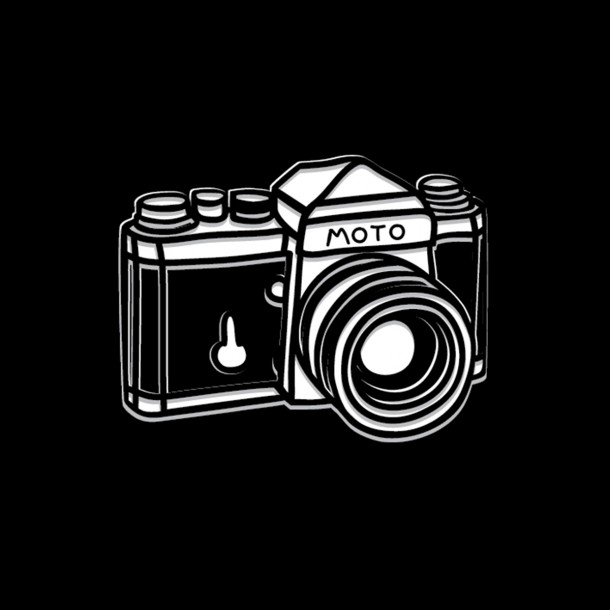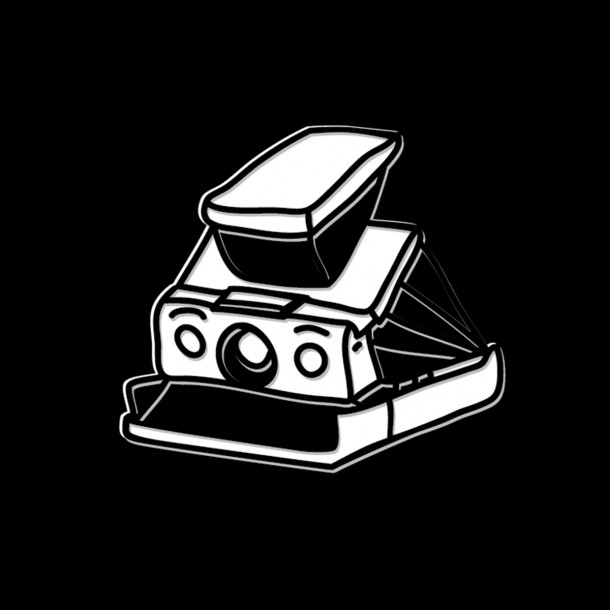A Short History of Tenspeed Hero by Way of Photographic Equipment
Cameras were a dynamic element of the creation of Tenspeed Hero, once upon a time. Our nascent form was a bunch of photogs in Chicago and abroad who loved to cycle. They started sharing their love for cycling through their other love, photos. Then they got into designing and making cool things to sell to like-minded enthusiasts, and BOOM: here we are today.
A Short History of Photography in the 20th Century by Way of Our Foto Cap
By Hannah Burtness
The Rolleiflex
A medium format (aka big negatives) twin lens reflex camera (aka one of those cool ones you look down into to take the picture) created by a German company way back in 1929. Enjoyed because of its compact size, usability, and quality and stability of image. The Rolleiflex produces a square photo that can be cropped if so desired. Think of the intensity of Diane Arbus, the stark honesty of Vivian Maier’s early photos. This camera is lovely, was lovely, is still produced new (if you have $5000 to spare) and will be treasured for how it sits elegantly on a shelf by antique hunters for a long time, whether they plan on using it for its life’s purpose or not.
The Hasselblad
is the only camera model to currently be sitting on the moon, orbiting earth. Another medium format camera, it is of incomparable quality, used by professionals the world over ever since World War II when Swede Fritz Wiktor Hasselblad made his new type of camera based on a captured German aerial model. It was so good (and so versatile, with fully interchangeable parts) they made a digital adaptation eventually, and it’s still the pro standard. Think of Lee Friedlander’s later work, Richard Avedon’s fashion plates, or every photo from all of the moon landings. The Hasselblad is such a high quality of camera, only professionals usually get to use it. (Professional photographers, and professional astronauts.)
35mm SLR
The classic 35mm camera (not necessarily a 35mm lens, though) has been used by nearly everyone, including, I bet, you. Or at least your dad. Simple, versatile, small, easy to handle and understand, the film is quick to load and there are–even today–many places you can get it developed with no hassle. Used at the beginning of their careers by a lot of the well-known names in this essay like Arbus and Friedlander, and sometimes for a whole beautiful career like our boy Bill Cunningham (grandfather of the street fashion photographer), or the incomparable Henri Cartier-Bresson.
SX70 Polaroid
The SX70 Polaroid: the original Instagram. Imagine if the *only way* to get photos of your life was the following process: buy film, load film in camera, use all of the settings correctly so that the photo comes out well, hope that the shot you got is the shot you want (the longer you’ve been a photographer, the better chance of this), wait until you’ve filled an entire roll of film, send it off to be developed and printed OR develop it yourself in your darkroom using all the correct chemicals and then print them yourself in your own printing lab. This process was normal, routine even, at the time, but the difference in time and ease that the Polaroid camera and its immediate and self-developing print made on the existence of a photograph was dramatic; as dramatic as the iPhone camera would be five decades later. Artists like Andy Warhol and David Hockney employed the ease and instant nature of the SX70 to start a new kind of visual record and infuse fresh style into the discipline of photography. Even Ansel Adams, famous for his sweeping and formal black and white landscapes of the American West, got into the Polaroid game. Famous photographers from the 1930s and 1940s, like Adams and Walker Evans, took to this new technology in the 1970s because of its ease of use; being older and less physically adept, they used it as a way to make work in their latter years.
…
A Short Connection Between Cameras and our Foto Cap
Many cyclists love the gears and fittings and workings of their machine in as rich a way as they love the thrill of the ride or the peacefulness of a trip across town. Photographers use and love their machines to make art, make memories, make a moment’s emotion fast in time. The joy of shooting with film is in tangibility, in the imperfections and authenticity of the physical process that often result in artistry. The joy of cycling is in the visceral connection to environment and self and muscles and air and ability. It is the tangible propelling of oneself via machine.
Therefore: to shutters and brakes, lenses and rims, to all the moments geeking out over gear and getting lost in the moment, we have made a cap. To cameras, and film, and taking pictures while we ride, and taking pictures of our rides. Foto cap!
